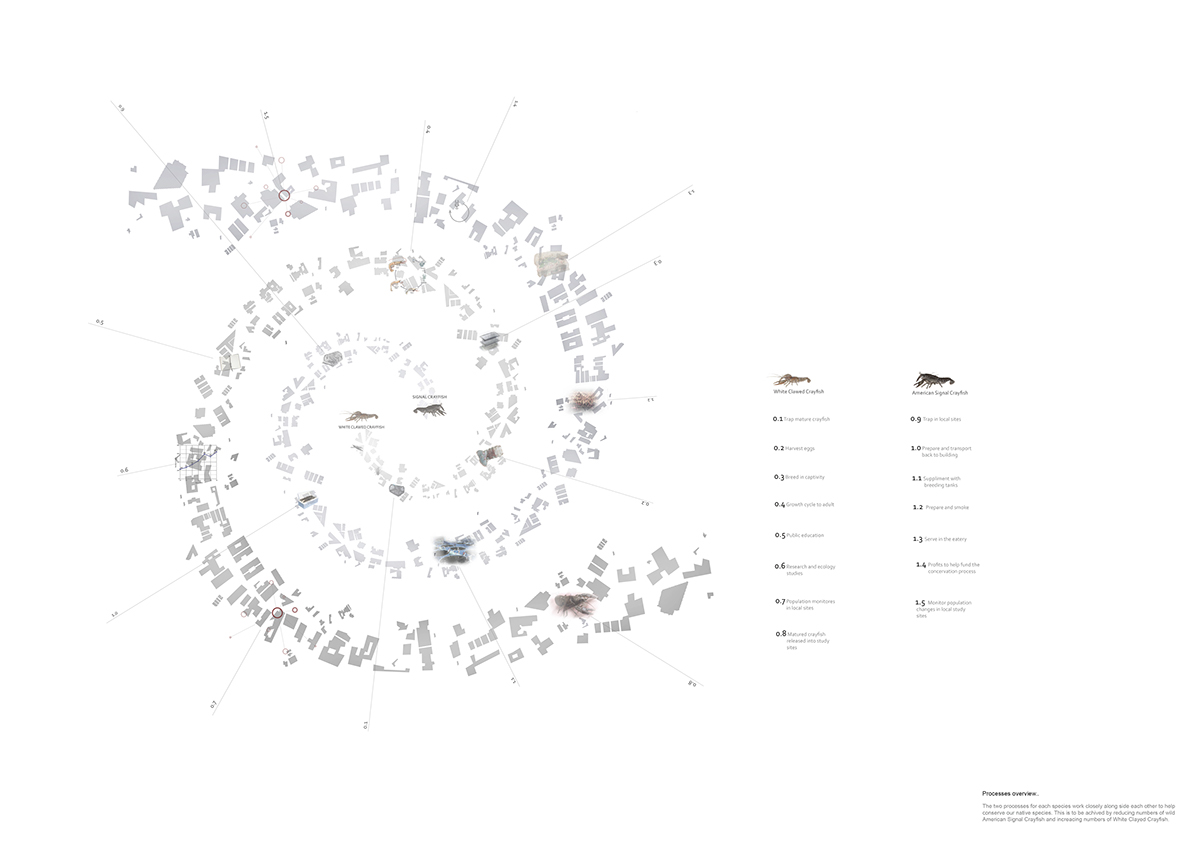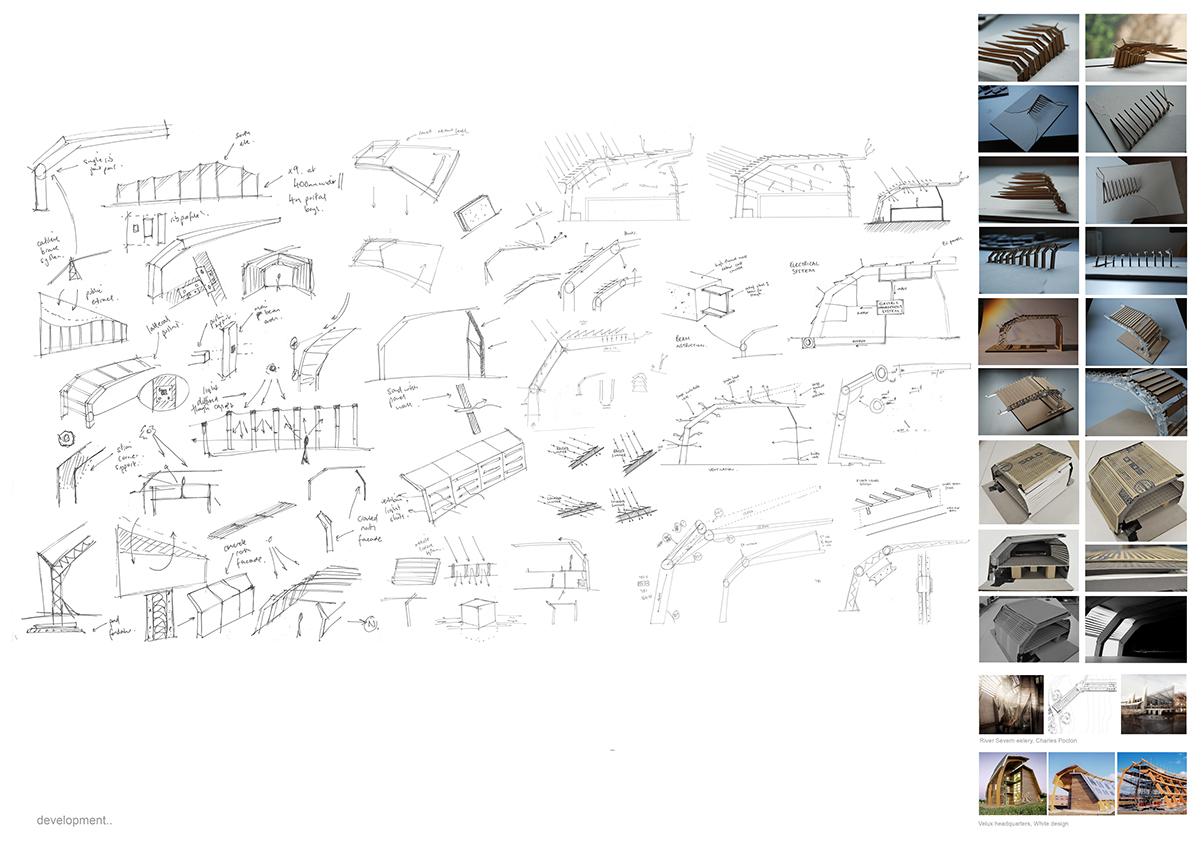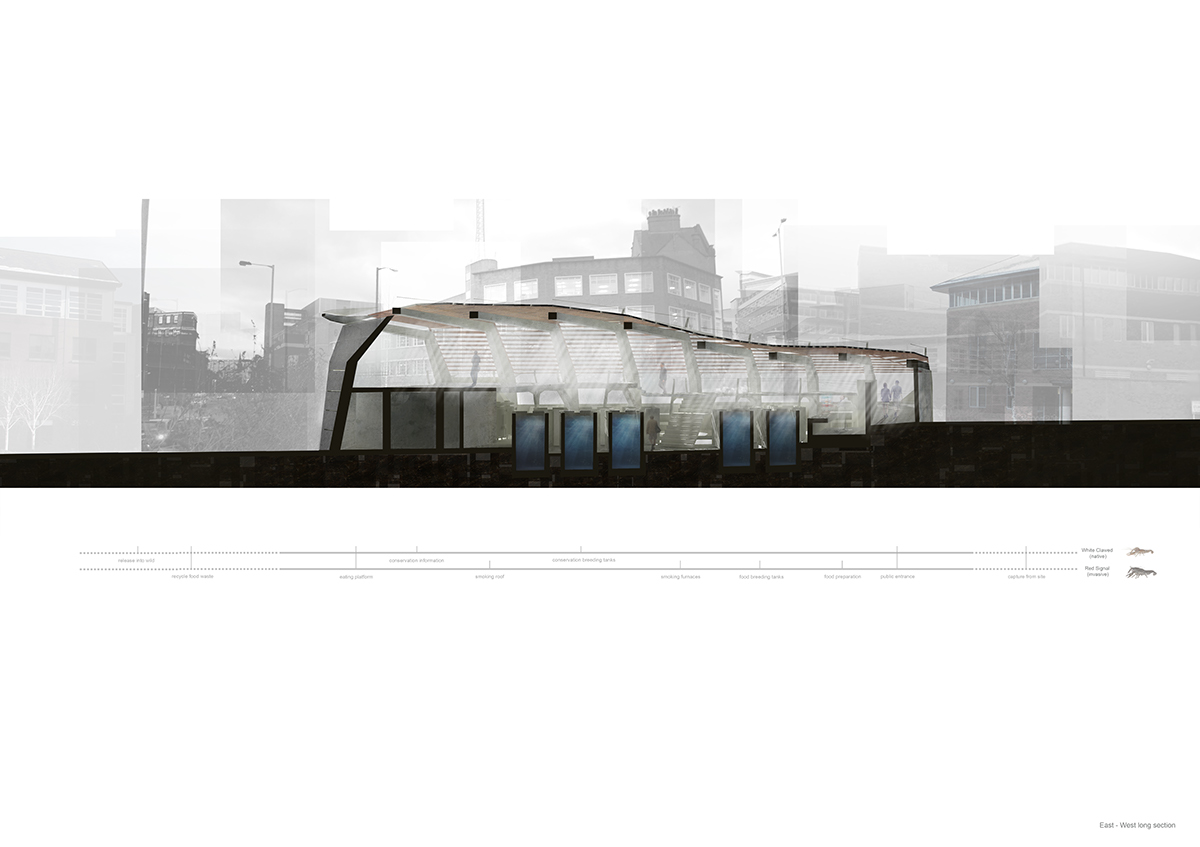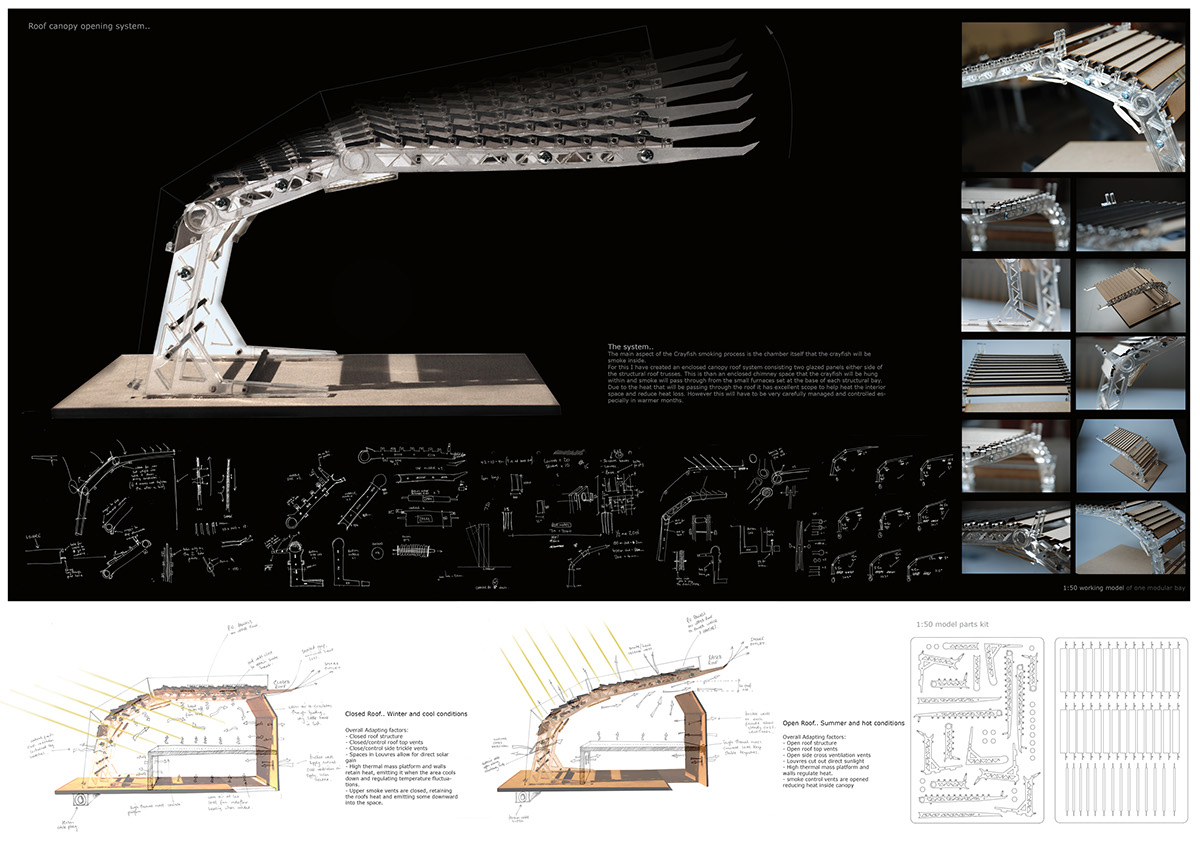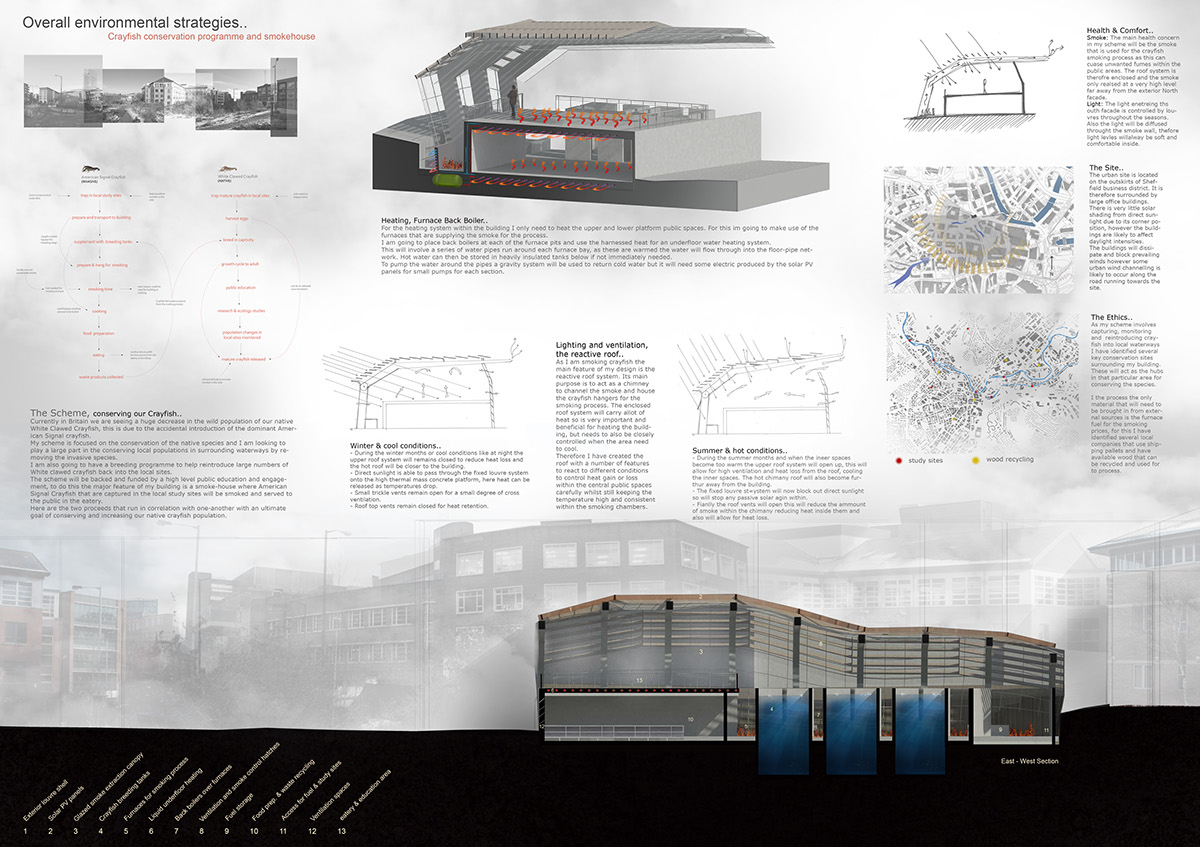In the UK we are currently seeing a dramatic decline in numbers of our native Crayfish species, the White Clawed Crayfish, within our freshwater waterways. This is largely due to habitat, food, disease and predation pressures from the introduced foreign species, the American Signal Crayfish.
Crayfish are predominately a nocturnal species meaning there is very little knowledge about them and very little education and understanding amongst the public.
This urban conservation centre is located on the fringes of Sheffield, UK adjacent to the River Don. It aims to help increase the numbers of our native White Clawed Crayfish in the waterways surrounding the city by capturing American Signal Crayfish and releasing White clawed Crayfish at a number of selected 'study sites' around the city.
The centre will house the breeding programme where young crayfish will be reared until maturity and then released into the study sites supplementing crayfish numbers.
The captured non-native species will be returned to the centre for cooking by the smoking process for consumption by the public within the centres café. This will supply an attraction and draw the public into the centre where they will also learn about both crayfish species and the problems our native species face increasing awareness.
The captured non-native species will be returned to the centre for cooking by the smoking process for consumption by the public within the centres café. This will supply an attraction and draw the public into the centre where they will also learn about both crayfish species and the problems our native species face increasing awareness.
The unique canopy structure is formed of a number of suspended and tensioned steel arches that are encased by a double glazed skin. The cavity between the glazing will supply a channel for smoke to pass through, here the crayfish will be hung on rotating horizontal racks. The spectacle provided inside the centre will be of changing light and casting shadows as the smoke passes through the roof.
The smoke will be provided by a number of small furnaces located at the base of each channel, these will be fuelled by local recycled timber and the excess heat emitted used to supplement the heating system in cooler months.
The unique canopy structure can be elevated opening up the sides of the centre in warmer months creating an exterior covered area within or completely closed down during cooler months for heat retention and thermal regulation.
The smoke will be provided by a number of small furnaces located at the base of each channel, these will be fuelled by local recycled timber and the excess heat emitted used to supplement the heating system in cooler months.
The unique canopy structure can be elevated opening up the sides of the centre in warmer months creating an exterior covered area within or completely closed down during cooler months for heat retention and thermal regulation.
The breeding process is located on the ground floor consisting of a number of tanks and research areas. The public will enter from a single ramp and will be drawn around the perimeter of the centre, learning as they go, and through the breeding area before culminating on the first floor café area that looks down on the entire process as well as providing views across the city.


